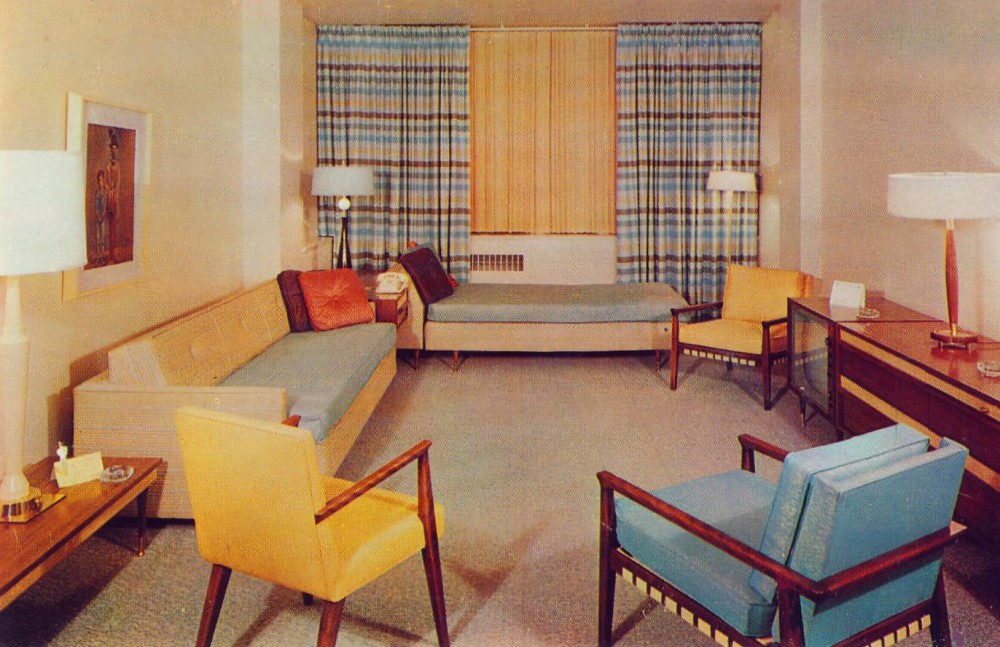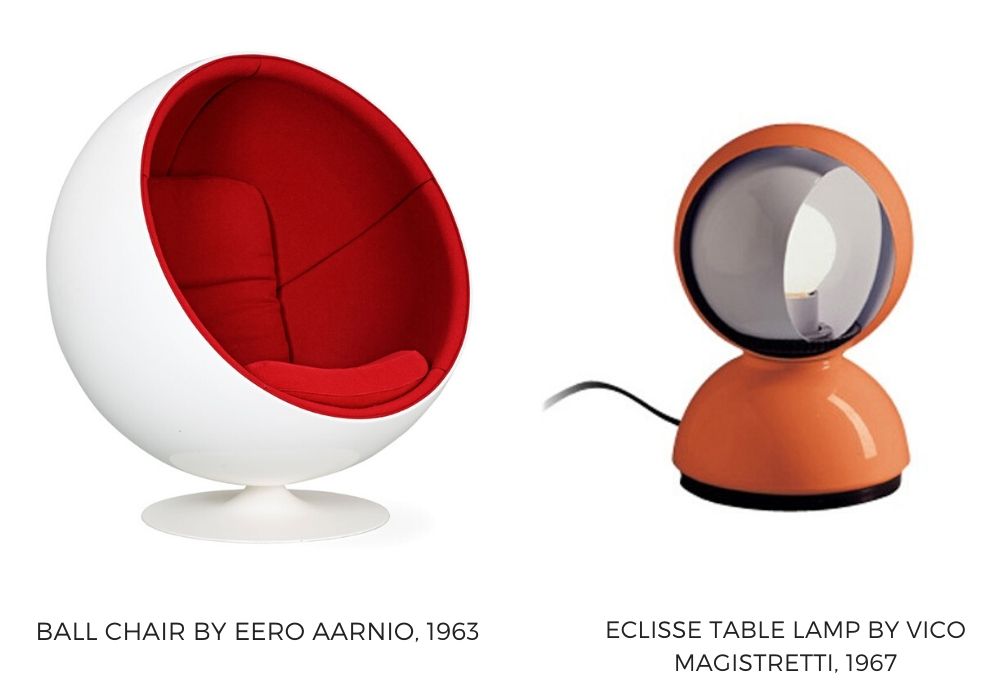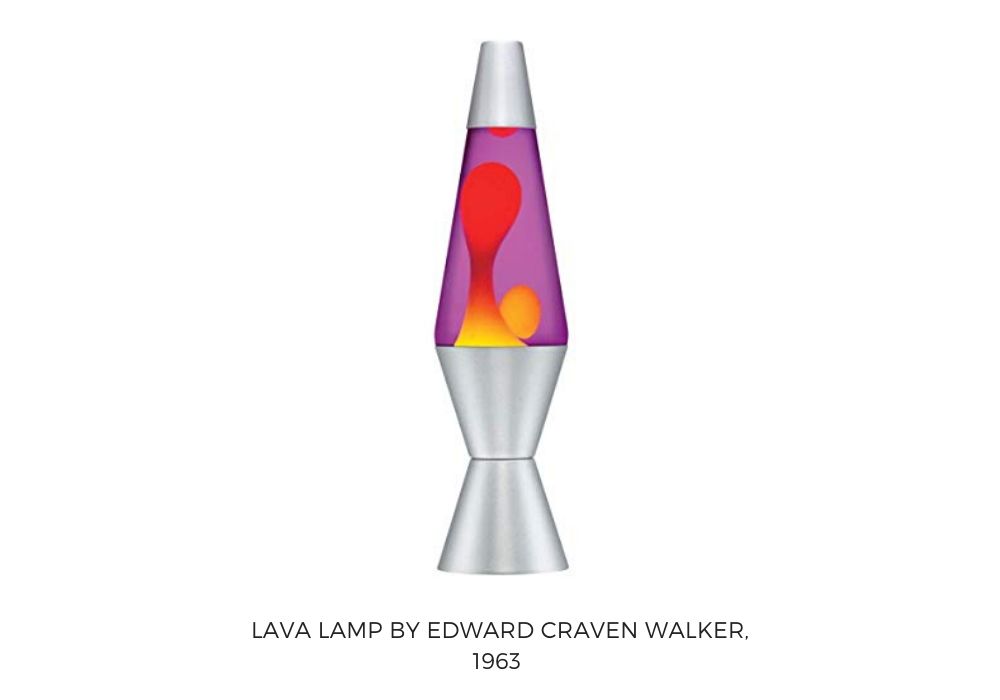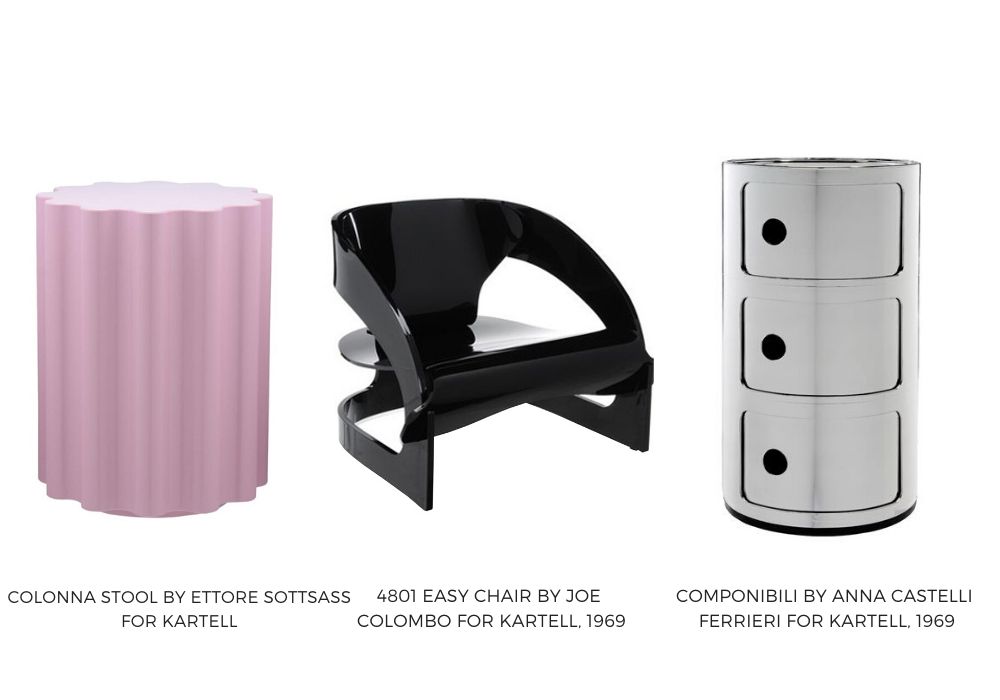Design In The 1960s
At the beginning of the decade, it was euphoric: the economy is growing at double-digit rates, and full employment provides an optimistic view of the future. A new way of life, based on the democratization of consumer goods, is changing the relationship with the daily environment. The increasingly successful decoration magazines reflect the more playful relationship with the domestic space. Parisian department stores are multiplying furniture exhibitions. Some, led by Prisunic, offer their own catalogue. In the United States, the hippie movement, born in 1966, is spreading its thirst for freedom. Between utopia and revolt against the consumer society, the protest movements intensified, until the French climax of May 68. In Woodstock or on the Isle of Wight, we dream of tomorrow’s singing and community life against a backdrop of hallucinogenic drugs. In design too, everything seems permissible.

In this period of unbridled creation, plastic quickly became the ideal material, the stacking Panton chair, designed by Verner Panton, was revolutionary. The shell was ultraviolet-, light- and waterproof, making it the first mass-produced chair to work indoors and out. The metal structure of the seats disappears under a foam covering. Everything is curved, everything is color! A famous example is Olivier Mourgue‘s “Djinn” series, which Stanley Kubrick chose in 1968 to furnish the 2001 decor: the odyssey of space. The Ball Chair by Eero Aarnio, the Eclisse Table Lamp by Vico Magistretti and spherical radios or televisions brought the Space Age into the terrestrial living rooms. The German industrial designer Dieter Rams was, from 1961, the head designer at Braun, a company whose household appliances, from hand mixers to speakers and radios defined the decade’s electrical aesthetic. Humour and derision are invited in a furniture that aims to adapt to the body and a community lifestyle. We relax at ground level, in the hollow of attractive sofas, or even in armchairs moulded to the human body.
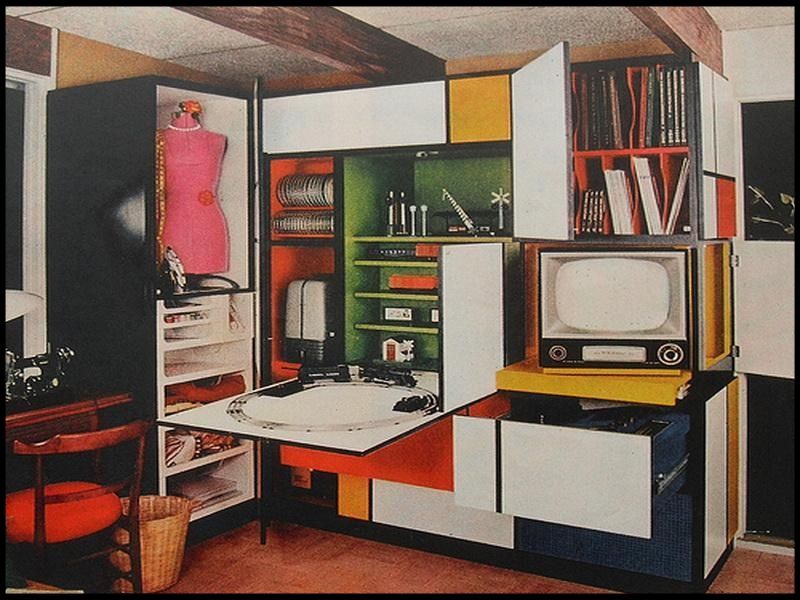
Pop art and op art both had a firm footing in the 1960s. Artists such as Andy Warhol and David Hockney with their pop art references to mass culture (soup cans, comic strips, images of icons like Marilyn Monroe) crossed over into interiors, and on to murals, wallpaper and posters. One creation that epitomised the mid-1960s design crossover with kitsch, was the renowned lava lamp or Astro lamp with its rocket-like shape, its sci-fi-cum-psychedelic visual display and hippyish, vibrant colours.
The baby boomers are 20 years old, the age of all possibilities and madness. Consumer society, hardly affected by the challenge it faces, continues to grow. A wind of cheerfulness and freedom blows in all areas of creation. And plastic, a fetish material, is inseparable from the colourful and offbeat style of the 1960s.
From flat pack furniture to iconic S and pod-shaped chairs made of space age materials, 1960s design saw furniture designers really stretching their creative arms. Metal, glass, wood and PVC were now all fair game when creating ranges to suit any number of styles, and this is something we still see today. Open shelving in the Danish style was now being embraced all over the world, often now used as break room separators. And individuals were properly leaning into styles that reflected their own tastes, rather than generic 50s ‘one size fits all’ approaches.
An icon of the movement “design for today, not for life” was the Blow chair, by Milanese designers Donato D’Urbino, Paolo Lomazzi and Gionatan De Pas, it was the first mass-produced piece of inflatable furniture, it was at once high-tech – made from electronically welded PVC – and yet disposable.
The result was a real design boom, from which the Italian design manufacturers mostly benefited. Designers like Ettore Sottsass, Joe Colombo and Anna Castelli Ferrieri designed brightly colored everyday objects made from ABS plastic for Kartell, Danese and Artemide, whose shapes corresponded to the latest state of technology. The faith in the new synthetics remained unbroken as it was further emphasized in the space age look. In retrospect, it can be said with certainty that the 60s was the era that put an end to the grey post-war period.
On the link below you can find a vast selection of our products from the 1960s. Don’t hesitate to check them out!


